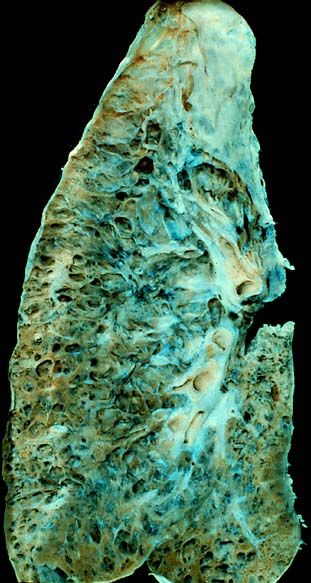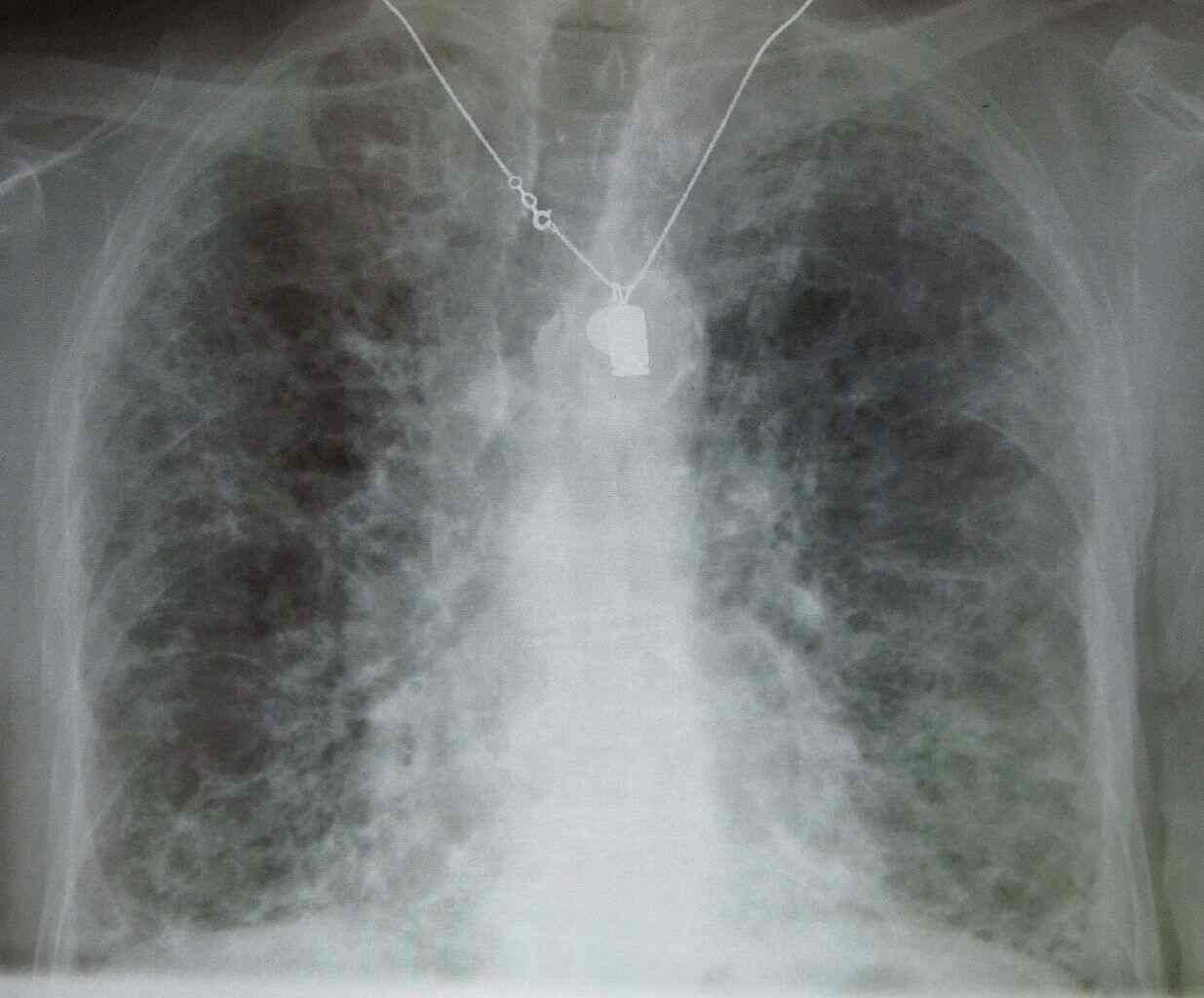Pulmonary Fibrosis
In this disease, the lung tissue stiffens by turning into fibrous tissue. This disrupts respiratory exchange. Many pulmonary fibrosis remains of unknown cause. It is also a chronic disease with a wide variety of causes. It causes abnormal scarring of lung tissue. Many diseases can cause pulmonary fibrosis, but in half of the cases the cause remains unknown.
Definition: what is pulmonary fibrosis?
Pulmonary fibrosis corresponds to an alteration of the deep part of the lungs. The deep part of the lungs allows the passage of oxygen from the lungs to the bloodstream which allows the transport of oxygen to the organs.
During pulmonary fibrosis, the deep lung changes its structure, thickens, stiffens and becomes a scar. Through this scar, oxygen is less well transported to the bloodstream. The severity of the disease is associated with the extent of this scar as well as its rate of extension. Advanced forms of pulmonary fibrosis can lead to pulmonary hypertension as well as chronic respiratory failure requiring the supply of oxygen.
Pulmonary fibrosis reduces life expectancy. “However, the evolution is very variable between the different patients. Some fibrosis evolve only very slowly (over several years) while others are much more aggressive. Some patients have a marked evolution by exacerbations which correspond to rapid evolution of the disease which can be life-threatening in the short term.
The different forms:
- Idiopathic pulmonary fibrosis
- Hypersensitivity pneumonia
- Pneumoconiosis
- Drug-induced pulmonary fibrosis
The occurrence of each of these forms is rare. It is not a type of cancer and pulmonary fibrosis is not contagious.
Symptoms
Manifested by a dry cough, unusual shortness of breath, cyanosis, and deformation of the fingernails taking on a bulging appearance. On examination, the doctor hears auscultatory abnormalities: crackles which correspond to abnormal noises during inspiration. Advanced forms are accompanied by a loss of appetite and weight.
Causes
It is a change in the deep lung. These changes can be linked to autoimmune diseases (scleroderma, polyarthritis, etc.), occupational exposure (asbestos, etc.), drugs.
They can also develop into specific forms of allergy to inhaled molecules (bird feathers, etc.). Some forms are linked to genetic mutations and are therefore hereditary.
Finally, in some cases, the cause of this disease is not known. This is called idiopathic pulmonary fibrosis. Pulmonary fibrosis usually appears between the ages of 60 and 70. It affects men more than women. It is more common in patients who smoke and in patients with a family history of fibrosis.
It is currently impossible to cure pulmonary fibrosis
Diagnostic
The diagnosis of this disease can be done by a chest X-ray. The scanner of the lungs is the examination which will, in the majority of cases, confirm the existence of fibrosis. In case of doubt, a lung biopsy can be performed (during surgery or during a bronchial fibroscopy).
When the diagnosis of fibrosis is suspected, numerous examinations will frequently be carried out to determine the cause: blood test in search of autoimmune diseases, bronchial fibroscopy and sometimes, genetic analysis. Finally, the severity of the disease will be assessed by carrying out breath tests, walking tests and blood gas tests.
Evolution
The evolution of this disease is variable depending on the causes of the fibrosis. The 2-year mortality of forms of idiopathic pulmonary fibrosis is estimated at less than 15%. For the other forms of fibrosis, the evolution is generally associated with that of the disease causing the fibrosis.
When fibrosis is linked to exposure to a drug or to “allergenic” molecules, the evolution generally stops when the exposure stops.
For all the causes of fibrosis, the evolution of the disease will be marked by increased shortness of breath and, from a certain stage, a need to receive long-term oxygen.
Read also: Oximeter | How does it work? What is Normal Range of Blood Oxygen Level?
Can it be cured?
It is currently impossible to cure this disease. Pulmonary fibrosis is an irreversible scar. It requires specialized care by a pulmonologist who will coordinate the assessment and the care. And to specify the objectives of the support:
- To slow the progression of fibrosis. This can be done by giving immunosuppressive drugs such as corticosteroids in forms associated with particular autoimmune diseases. In the forms of idiopathic pulmonary fibrosis, anti-fibrotic treatments are now available. For all causes of pulmonary fibrosis, it is important to protect the lung from any “stress”. It is therefore essential to stop smoking and to protect yourself against infections, the first of which is the flu.
- To limit the consequences of shortness of breath. This can be done by offering pulmonary rehabilitation or oxygen.
- In very advanced forms occurring in subjects under 65 years of age and with few other diseases, a lung transplant may be proposed.
- However, certain medications exist and can reduce the symptoms and limit their severity.
What treatment is offered for this disease?
- It requires respiratory rehabilitation and the administration of medication (inhaled or systemic corticosteroids, possibly drugs that dilate the bronchi) and, if necessary, the administration of oxygen.
- For idiopathic pulmonary fibrosis, there are new drugs that can slow the progression of the disease.
In advanced cases, respiratory assistance will be put in place and, sometimes, a lung transplant attempted. - Discuss with your doctor how you can maintain a certain level of physical activity, and cut out tobacco.
- Finally, vaccinations against influenza and pneumococcus are recommended.

Lung with end-stage pulmonary fibrosis at autopsy. End-stage interstitial lung disease describes a large group of disorders, most of which cause progressive scarring of lung tissue. The scarring associated with interstitial lung disease eventually affects the ability to breathe and get enough oxygen into the bloodstream. See page for author, Public domain, via Wikimedia Commons
What is Idiopathic Pulmonary Fibrosis: Definition, Symptoms and Diagnosis
It is a chronic, progressive and irreversible disease of unknown origin (idiopathic).
This disease is characterized by an unpredictable and progressive deterioration of the lungs. It is manifested by a progressive deterioration of respiratory function, leading within a few years to chronic respiratory failure and then to death. Median survival is 2 to 5 years from diagnosis. Idiopathic pulmonary fibrosis has a lower survival rate than many cancers.
Idiopathic pulmonary fibrosis: an urgent need to accelerate treatment
While the exact cause of idiopathic pulmonary fibrosis remains unknown to date, we know that it is likely determined by genetic and environmental factors that have yet to be identified6. Idiopathic pulmonary fibrosis usually manifests after age 50 with a male predominance.
It is a serious disease, with inter-individual differences in its evolution: in a minority the disease can remain stable over a period of variable duration; in other people, the disease will get worse very quickly.
Information: Cleverly Smart is not a substitute for a doctor. Always consult a doctor to treat your health condition.
Sources: PinterPandai, Mayo Clinic, NHS UK, The American Lung Association, Asthma and Lung UK
Photo credit: James Heilman, MD (CC BY-SA 3.0) via Wikimedia Commons
Photo description: a chest X-ray showing pulmonary fibrosis.



